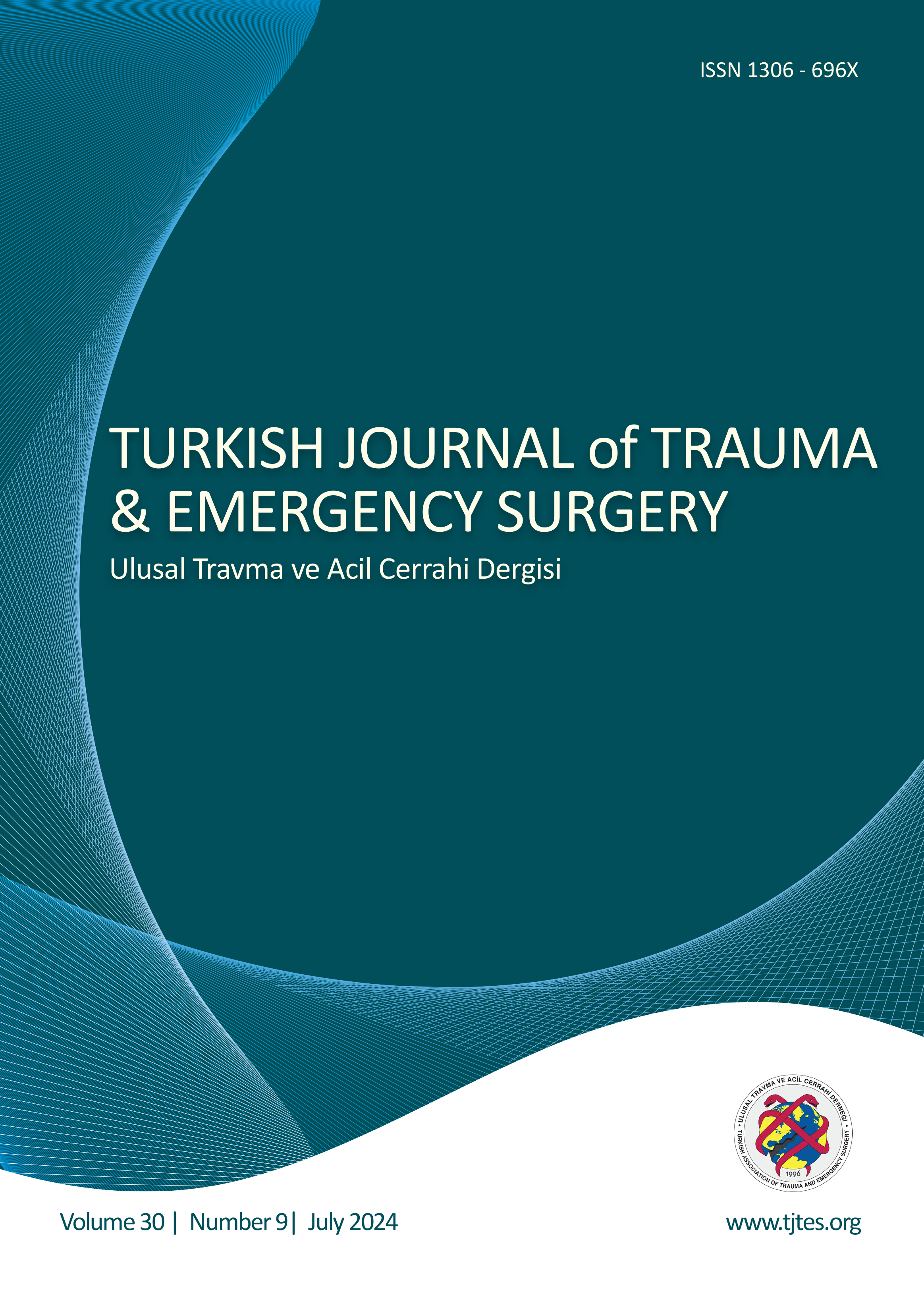Quick Search
The effects of zinc sulfate mineral supplementation on Achilles tendon healing in rats
Yiğit Önaloğlu1, Ender Alagöz2, Mahsum Solmaz3, Nilsen Yıldırım Erdoğan1, Metehan Demirkol4, Bedri Onur Küçükyıldırım41Başakşehir Çam and Sakura City Hospital, İstanbul-Türkiye2Bağcılar Training and Research Hospital, İstanbul-Türkiye
3Kapaklı State Hospital, Tekirdağ-Türkiye
4Yıldız Technical University, İstanbul-Türkiye
BACKGROUND: The Achilles tendon is the most commonly injured and ruptured tendon in the body and typically occurs during participation in sports or recreational activities in men between 30 and 50 years of age. Treatment options for Achilles tendon rupture include conservative and surgical approaches. Conservative treatment is associated with a higher risk of rerupture, while surgical treatment carries a risk of wound site complications. Generally, both methods result in a prolonged tendon healing time. Studies are ongoing to identify biomolecules that aid tendon repair. The main objective of our study is to investigate the effects of zinc sulfate (ZnSO4) mineral supplementation on Achilles tendon healing in rats.
METHODS: Forty-eight female Sprague-Dawley rats were divided into four equal groups (C-15, C-30, ZnSO4-15, and ZnSO4-30) after standard Achilles tendon repair surgery. The ZnSO4-15 and ZnSO4-30 groups received an oral zinc sulfate monohydrate solution (50 mg/kg/day) for 15 and 30 days, respectively. The C-15 and C-30 groups were given 1 mL of distilled water per day orally during the experimental periods. Rats were sacrificed on the 15th and 30th day depending on their groups, and the healing of the operated tendons was evaluated using Movin and Bonar histopathologic scoring. For biomechanical analyses, the operated and intact Achilles tendons of all groups were removed, and tensile tests were performed to determine the tensile strength and toughness values for each tendon.
RESULTS: Movin and Bonar scores were significantly lower in the ZnSO4-15 group than in the C-15 group and in the ZnSO4-30 group than in the C-30 group (p<0.05). Although we did not find the biomechanical results statistically significant, the intact tendons of the ZnSO4-15 group exhibited higher toughness than those of the C-15 group, and the tensile strength and toughness values of the operated and intact tendons of the ZnSO4-30 group were also higher than those of the C-30 group.
CONCLUSION: Zinc sulfate monohydrate mineral supplementation had histopathologically positive effects on the proliferation and remodeling stages of Achilles tendon healing and may biomechanically benefit both operated and intact tendons.
Keywords: Achilles tendon healing, biomechanical examination; Experimental study; histopathological examination zinc sulfate; mineral supplementation.
Sıçanlarda çinko-sülfat mineral takviyesinin aşil tendon iyileşmesi üzerindeki etkileri
Yiğit Önaloğlu1, Ender Alagöz2, Mahsum Solmaz3, Nilsen Yıldırım Erdoğan1, Metehan Demirkol4, Bedri Onur Küçükyıldırım41Başakşehir Çam ve Sakura Şehir Hastanesi, İstanbul, Türkiye2Bağcılar Eğitim ve Araştırma Hastanesi, İstanbul, Türkiye
3Kapaklı Devlet Hastanesi, Tekirdağ, Türkiye
4Yıldız Teknik Üniversitesi, İstanbul, Türkiye
AMAÇ: Aşil tendonu vücutta en sık yaralanan ve rüptüre olan tendon olup tipik olarak 30 ila 50 yaş aralığındaki erkeklerde bir spor veya eğlence aktivitesine katılımla ortaya çıkar. Aşil tendonu rüptürü tedavisinin konservatif ve cerrahi seçenekleri vardır. Konservatif tedavi daha yüksek yeniden kopma riski ile ilişkilendirilirken, cerrahi tedavi yara yeri komplikasyonları riski taşır, genel olarak her iki yöntem de uzun bir tendon iyileşme süresine sahiptir. Tendon onarımına yardımcı olan biyomolekülleri tanımlamak için çalışmalar devam etmekte olup çinko-sülfat (ZnSO4) mineral takviyesinin sıçanlarda Aşil tendonu iyileşmesi üzerindeki etkilerinin araştırılması çalışmamızın ana hedefidir.
GEREÇ VE YÖNTEM: 48 adet Sprague-Dawley cinsi dişi sıçan geçirdikleri standart aşil tendon onarımı cerrahisi sonrası dört eşit gruba (C-15, C-30, ZnSO4-15 ve ZnSO4-30) ayrıldı. ZnSO4-15 ve ZnSO4-30 gruplarına sırasıyla 15 ve 30 gün boyunca oral çinko-sülfat-monohidrat (50 mg/kg/gün) çözeltisi verildi. C-15 ve C-30 gruplarına ise deney sürelerince oral 1 ml distile su/gün verildi. Sıçanlar gruplarına bağlı olarak 15 ve 30. günlerde sakrifiye edildi, takiben opere tendonların iyileşmeleri Movin ve Bonar histopatolojik skorlaması kullanılarak değerlendirildi. Biyomekanik analizler içinse tüm grupların ameliyat edilmiş ve sağlam aşil tendonları çıkarılarak gerilme testleri yapıldı ve her bir tendon için gerilme mukavemeti ve tokluk değerleri hesaplandı.
BULGULAR: Movin ve Bonar skorları ZnSO4-15 grubunda C-15 grubuna göre ve ZnSO4-30 grubunda C-30 grubuna göre anlamlı olarak düşüktü (p<0.05). Biyomekanik sonuçları istatistiksel olarak anlamlı bulmamamıza rağmen, ZnSO4-15 grubunun sağlam tendonları C-15 grubundan daha yüksek tokluğa sahipti ve ZnSO4-30 grubunun ameliyat edilmiş ve sağlam tendonlarının gerilme mukavemeti ve tokluk değerleri C-30 grubundan daha yüksekti.
SONUÇ: Çinko-sülfat-monohidrat mineral takviyesinin, Aşil tendonu iyileşmesinin proliferasyon ve remodelizasyon aşamaları üzerinde histopatolojik olarak olumlu etkileri olduğu, hem ameliyat edilmiş hem de sağlam aşil tendonlarına biyomekanik olarak da fayda sağlayabileceği öngörüldü.
Anahtar Kelimeler: Aşil tendon iyileşmesi, biyomekanik inceleme; deneysel çalışma; çinko-sülfat; histopatolojik inceleme; mineral takviyesi.
Manuscript Language: English




